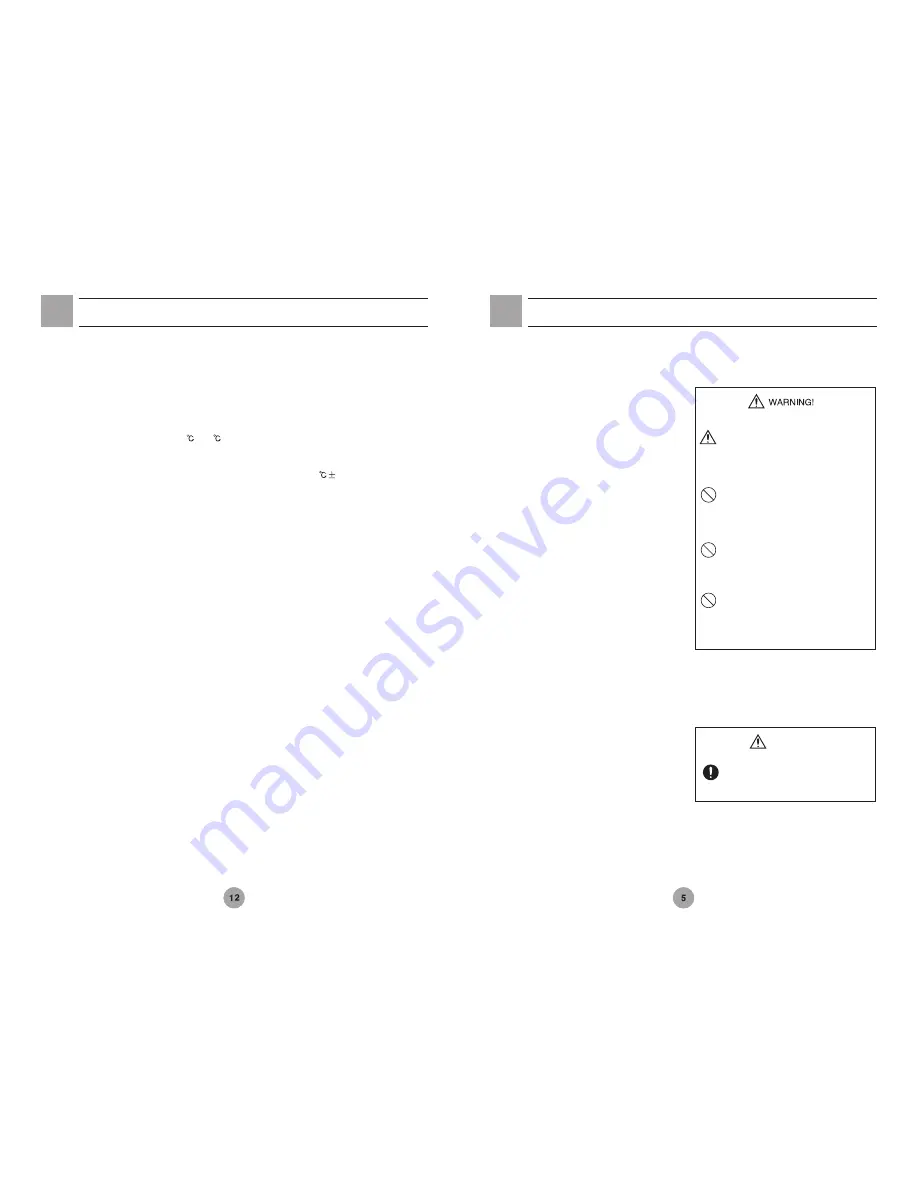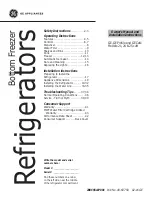
Proper usage of the Refrigerator
During the initial startup and continuous usage of the refrigerator, the following procedures should be
followed.
1.Power the refrigerator in a dedicated power socket. The voltage requirement is 220 VAC and 50
hz. When started, do not place any products in the refrigerator.
2.When the unit initially starts up, the buzzer alarm may sound. This is normal. You can push the
buzzer alarm button to cancel the sound. The buzzer alarm continues to work until the upper bottle
temperature reaches the range of 2
to 8
.
3.Make sure that both sensor bottles have glycerin solution of 10% concentration.
Please refer to
item 4 in the Operation section for details.
4.This refrigerator has been factory preset to operate at a range of 2-8
1. It is not necessary to
adjust the temperature set point.
5.It usually takes several hours for the unit to reach the preset temperature.
Once the unit's
temperature is stable, check the sensor bottle temperature to see if it matches the set point.
6.Turn on the light for the interior. Inspect the light to makes sure it functions properly.
7.Once a thorough inspection of the unit is completed, products can be loaded into the refrigerator.
Beware to not load too many warm products into the unit at one time.
The terminals for the remote alarm contact are located on the back of the unit cover panel. The contacts
are designed for 30 VDC and 2A load. The remote alarm contacts work in synchronization with the
buzzer alarm on the refrigerator.
Therefore, the remote alarm can be terminated by pushing the buzzer
alarm button. However, in case of a power outage, the remote alarm contacts cannot be controlled by
the buzzer alarm.
Remote alarm condition: Open for Normal, Close for Abnormal
Remote alarm contact
Location of Refrigerator
Your refrigerator should be placed at a location that satisfies the following conditions. By doing so, the
optimum operating results can be achieved.
1)Firm, level floor surface
2)A place that is far away from any heat
source
3)Do not install a refrigerator in direct sunlight
4)Dry area
5)Clean area
6)Good ventilation
7)Ground protection
Installing the unit on a firm and flat floor surface
reduces the chance of excessive noise and
vibration.
Avoid placing the unit near any heat dissipating
devices such as a gas stove, radiator, oven and
other source of heat. The refrigerator would lose
its efficiency once the insulation is exposed to
heat.
If a unit is in direct sunlight, it may not function
properly and its life expectancy can be shortened.
Avoid placing the unit near damp areas such as a
water faucet and sink.
Avoid installing a unit in or near chemical
materials and materials that might have out-
gassing property. Also avoid dusty locations.
There must be sufficient space around the unit for
air ventilation. Lack of such space will reduce the
unit's cooling capability.
Grounding the refrigerator will prevent electrical
shock to operators if its electrical insulation
becomes weak.
An electrical power plug with a ground
prong must be used to power the unit.
This is to prevent electrical shock.
Do not use water lines to replace a
properly installed ground wire for
ground protection.
This is because
many water lines are actually built with
non-conductors such as plastic.
Never use gas lines as the ground
protection for the refrigerator.
This
action can be very dangerous.
Never use a telephone line or lightening
rod as a grounding protection for the
refrigerator.
This is because during
lightening, there is a strong current
present which is extremely dangerous.
8)Do not place any objects on top of the
refrigerator.
Do not place the unit in an area where
objects can fall directly onto it. This is to
avoid damaging the refrigerator.




























